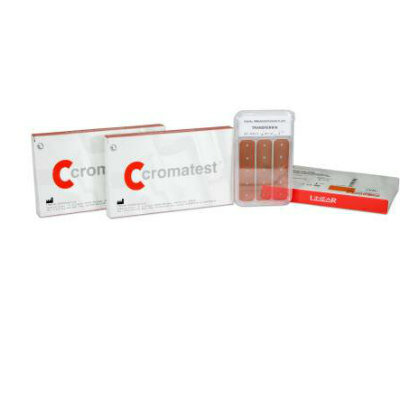Value and Use of Urinalysis for Myoglobinuria
By LabMedica International staff writers
Posted on 16 Dec 2019
Rhabdomyolysis is a syndrome involving acute muscle injury caused by numerous conditions, such as trauma), intense exercise, inflammatory or hereditary myopathies, snake toxins, seizures, alcohol or drug overdose, hyperthermia, and severe hypokalemia.Posted on 16 Dec 2019
Muscle damage leads to increased serum levels of creatine phosphokinase and myoglobin, which serve as primary indicators for laboratory diagnosis. Measurements of peak levels and clearance rates of serum myoglobin have been reported to have value for predicting acute renal failure in patients with rhabdomyolysis. Its detection in urine may also serve as an aid in diagnosis and assessment of severe rhabdomyolysis, and secondarily as a biomarker for risk of renal injury.

Image: Urine from a person with rhabdomyolysis showing the characteristic brown discoloration as a result of myoglobinuria (Photo courtesy of James Heilman, MD).
Medical Laboratory Professionals at the Southern Arizona VA Healthcare System (Tucson, AZ, USA) conducted a retrospective observational study involving all identifiable urine myoglobin results as well as blood and microscopic red blood cell results by urinalysis. Other than general myoglobin testing method (qualitative or quantitative) no other information was available. No patient demographics or clinical information was obtained. Urine myoglobin concentrations 1,000 μg/L or greater were considered clinically significant for potential renal toxicity. Hematuria was defined as five or more red blood cells/µL
The team reported that a total of 13,139 urine myoglobin results from 88 Veterans Affairs facilities during a 15-year period ending in October 2014 were evaluated. Among methods used by each laboratory, qualitative urine myoglobin tests declined from 25 of 53 (47.1%) in 2000 to 5 of 77 (6.4%) in 2013. Of 7,311 tests (55.6%) performed by quantitative methods with concomitant urinalysis, 3.915 (53.5%) showed negative to trace blood results, of which myoglobin was 1,000 μg/L or greater in 17 (0.4%). Among 1,875 (25.5%) with 3+ (large) blood results, urine myoglobin was ≥1,000 μg/L in 273 of 1,533 (17.8%) with hematuria (≥5 red blood cells per microliter) and 109 of 342 (31.9%) without hematuria.
The authors concluded that their study provided evidence-based support for the role of urinalysis in testing for myoglobinuria. Measurement of urine myoglobin is unnecessary in cases with absent or only small amounts of blood by urinalysis which reliably excludes the presence of clinically significant myoglobinuria. Conversely, the presence of increasing amounts of blood by urinalysis progressively raises the probability of myoglobinuria, especially in the absence of hematuria. When urine myoglobin cannot be promptly and accurately measured, its value is limited to that of a confirmatory test, with marginal clinical impact when used for diagnosis and management of rhabdomyolysis compared to that provided by urinalysis results. The study was published in the November, 2019 issue of the journal Archives of Pathology & Laboratory Medicine.
Related Links:
Southern Arizona VA Healthcare System












